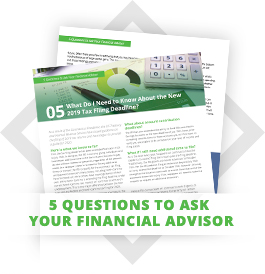Investing can often feel like riding a rollercoaster of exciting highs and daunting lows.
This week, we’re digging into the intricacies of the financial planning process, focusing particularly on the importance of understanding market trends and that when you diversify your portfolio it can help play a role in safeguarding your wealth.
The Market’s Recent Performance
2024 was a remarkable year for the US stock market, with an impressive 24% increase.
International markets also performed well, albeit not as strongly, with gains between 5% and 8%. US bonds experienced a modest uptick of just over 1%.
Over the past five to ten years, the US stock market has consistently outperformed, making it tempting to allocate all investments there.
The Risk of FOMO
A common pitfall when investing is the fear of missing out (FOMO). When you see strong performance in sectors like large tech stocks, it’s natural to want to invest heavily in those areas. However, this can lead to a dangerously unbalanced portfolio.
While investing entirely in successful stocks like large tech might seem prudent, there are times when these decisions have backfired spectacularly.
For example, in the 2000s, tech stocks suffered significant losses, reminding us that markets are cyclical.
Fight the FOMO and continue to diversify your portfolio, even when there are strong performances in certain areas.
The Price You’re Paying for Stocks
We also discuss the price-to-earnings (P/E) ratio. The price you’re willing to pay for a stock reflects its valuation.
For instance, paying $52 for each dollar of NVIDIA’s earnings contrasts sharply with paying $15 for each dollar of earnings at more value type companies like Coca-Cola.
Though market darlings like NVIDIA may promise high returns, the high price could signal lower future returns, a lesson painfully learned by investors in Cisco Systems during the dot-com bubble.
The Role of the Federal Reserve
The Federal Reserve’s actions heavily influence short-term returns on cash investments.
Although cash yielded about 5% following the financial crisis, rates quickly dropped to almost zero, wreaking havoc on those relying on bank interest. The expectation is that rates will decline gradually, meaning it’s better to lock in current rates.
We’re also sharing insights from financial experts from BlackRock, JPMorgan, Schwab, and Vanguard. They expect international markets to outperform US markets over the next decade, which contradicts the past ten year’s performance.
This makes it even more necessary to avoid an overreliance on US stocks.
Outline of This Episode
- (03:08) Investing with diversification mitigates risk; US stocks average 10% annual returns over the long term but vary yearly.
- (08:39) US and China stock market gains were largely driven by speculative buying, with US stocks being pricier than international and small stocks.
- (12:07) Tech stocks are currently overvalued, reminiscent of past market bubbles
- (15:57) Bonds have a stable 5% return, but cash rates are volatile and are expected to drop to 3.9% this year.
- (17:37) Despite acknowledging the unpredictability of the future, experts from BlackRock, JPMorgan, Schwab, and Vanguard forecast international markets to outperform US markets over the next decade.
- (20:01) Diversification guards against risk and helps investors achieve their goals
Resources & People Mentioned
- Article from Vanguard – Think Differently About Global Diversification
- Vanguard – Perspective on tech sector volatility
- JP Morgan Guide to the Markets
- FSI – International Stocks and Recency Bias
- Morningstar – 2025 Returns Forecast
- FSI Three-Step Investment Process

